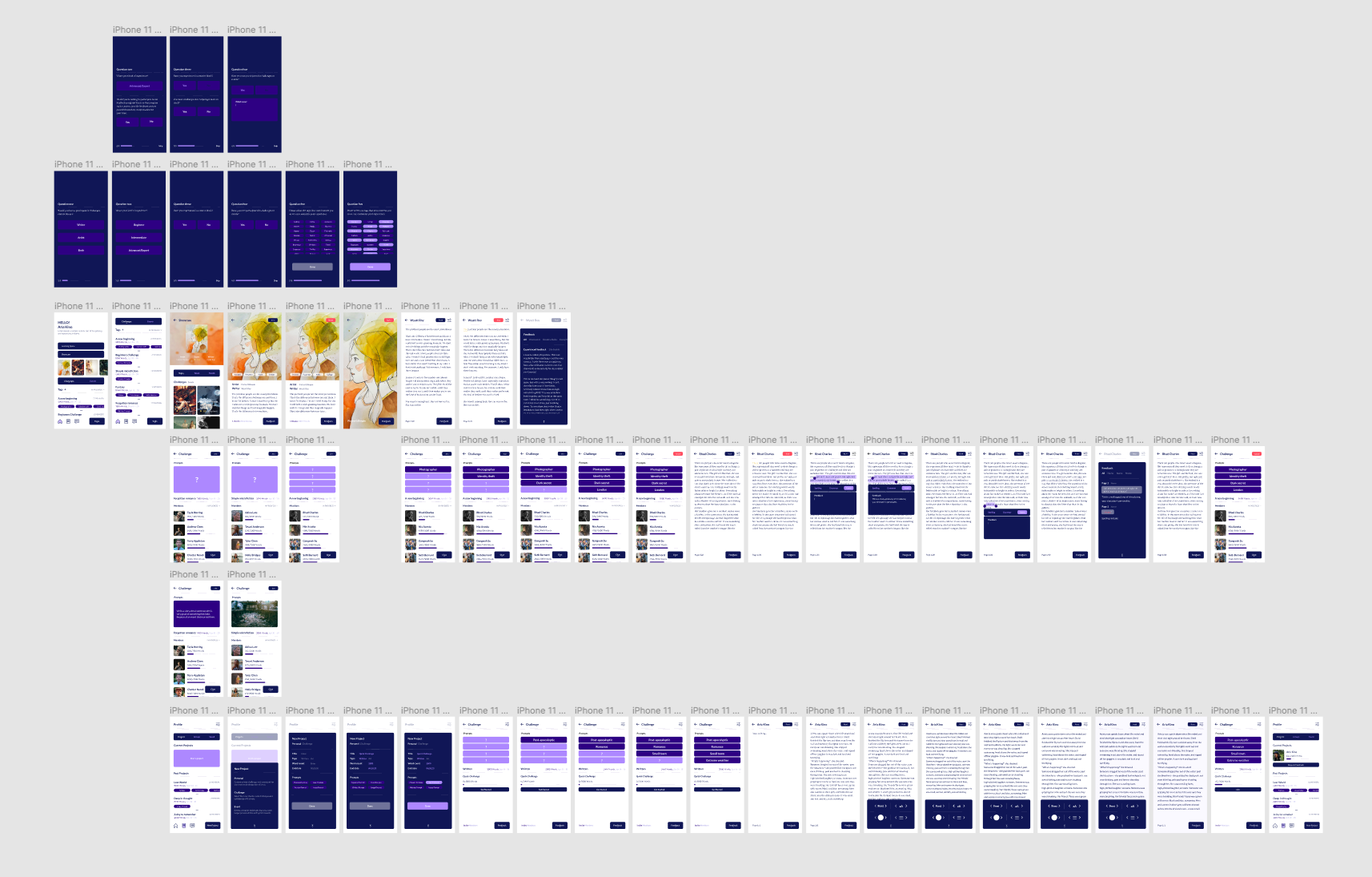C.C.
YSDN4003
- Assignment 01
- Assignment 02
- Assignment 03
- Assignment 04
Colin Coulson
213659164
What is your concrete topic?
My chosen topic for this project is an app that combines writers and artists through challenges and prompts. I want to create an environment for writers and artists to collaborate and participate in challenges where a set of prompts are given, and users write or create a drawing within a given window. The user who then participates will then comment, critique and vote on their favourite pieces, which will be displayed for all users to engage with.
What is the goal of the project?
My goal for this project is to create an environment and user flow that allows the user to navigate various challenges, engage the user to participate in challenges by submitting work, and participate in discussions and critiques to help the collective improve and develop through their application. These challenges are often implemented into a person's routine to challenge a creative block or spark inspiration into individuals, so cultivating a safe, collaborative space that motivates a user's creativity is the goal of this project.
What do you like about this idea?
I like this idea because it is a challenge to mix the two genres of writing and drawing. Even though both practices implement similar challenges and benefit from the results, having the two communities collaborate should produce exciting results. This could also entice users to try the opposite side, challenging the user to try their hand at the other practice. I also believe that many of the examples I found for writing and art challenges are missing the rewards within the process and completion that could be present in a collaborative environment.
What elements or factors could risk the achievement of your project ?
I believe that the factors that could affect my project are the amount of content present within the app. The intent is for the challenges to be the app's central element, but is it too little that users would not return to the app? On the other hand, implementing too many other features may overwhelm or be undesirable for the user. Another risk is if the content of the app is less desirable for one of the audiences. If the app is tailored more for the writers, the artists may feel less accommodated and deter a healthy mixture of creative users.
What's your inspiration for your project?
I have come to appreciate reading and always have enjoyed creative storytelling. My mother recently started writing and has participated in different groups and events, and it isn't easy to manage writing as a hobby. I also empathize with those who have experienced a creative block. Learning that these challenges are a creative method of sparking new inspiration for individuals has inspired me to make them accessible to different users. When I looked into the challenges for artists and writers, I found similarities that could showcase the other creatives within both fields.
Research
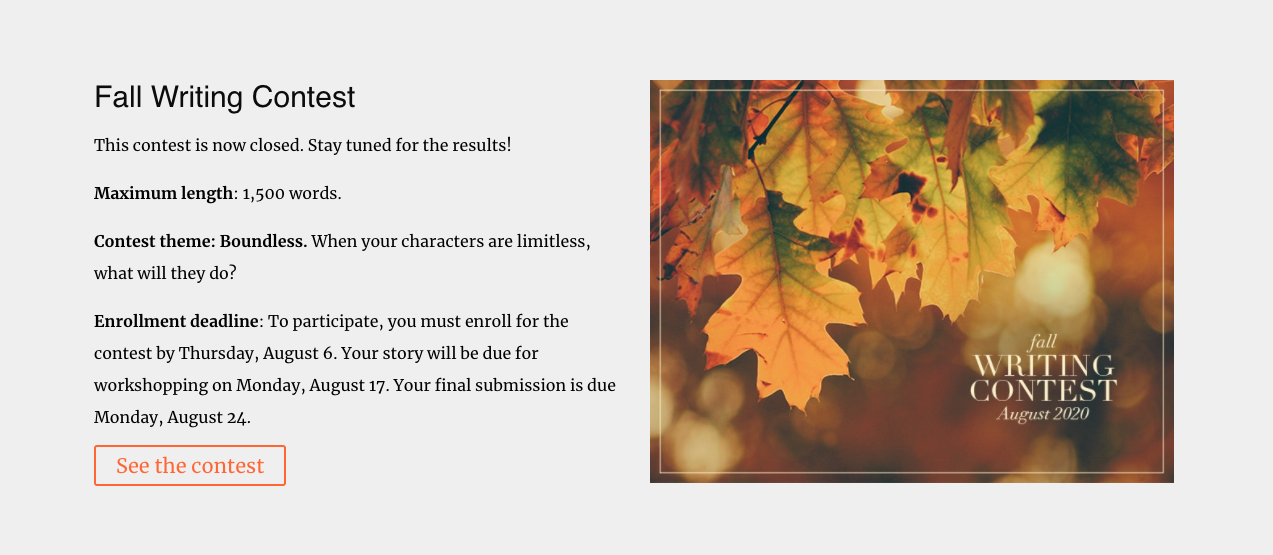
Why Use Online Creative Writing Apps
Sometimes it’s hard to get into the writing spirit and this is no less true with students. There are often many reasons why any budding scribe in your class just can’t seem to produce anything. More often than not, it comes down to inspiration. So what if you could change that? What are some ways to get ideas flowing and to make writing fun, all while using online tools that ignite passion and inspire learning?
Writer's block—sometimes it feels like less of a block and more of an insurmountable wall. Inspiration can seem to be a million miles away, with no hope of being reached. Thanks to the scores of online creative writing apps we can access today, it doesn't have to be that way anymore. This is especially good news for students taking on ambitious writing projects in the classroom.
Examples of challenges/prompts
Put together a story from elements that don’t fit together
If you’re struggling to come up with any ideas at all, one way both to challenge yourself and possibly spark your creativity is to pick an assortment of unrelated words or concepts and try to see how you can assemble a story from them. So that might be “revolution – teacup – elephant – catastrophe” or “umbrella – suffragette – chimney – adventure” (the latter could turn into Mary Poppins!). How you construct the story is then entirely up to you, but hopefully even these couple of examples are giving you ideas.
Try not to string together just a series of objects, but instead include abstract ideas to give the story some depth. You might want to look around you for everyday items, peruse newspaper headlines for concepts that imply action (you might find war, protests, betrayal, espionage… none of them pleasing headlines, but all great material for fiction), or look at a completed crossword for some entirely random ideas. And try to think outside the box when you come up with an idea – you might not think that ‘gun’ and ‘dragon’ belong in the same story, for instance, but it could make for an interesting narrative if you do find a way to fit them together.
Write a daily microfiction
If you can’t imagine that you’d ever have time to write 2,000 words in any given day, don’t worry. One way of practising your writing that’s also much more sustainable long-term is to write a daily piece of microfiction. Task yourself with writing something that forms a complete whole every day (or every week, if daily is unmanageable). It might be only be a couple of hundred words long – or even less – but the challenge here is to create something regularly that stands on its own. In some ways, this is harder than NaNoWriMo’s punishing word count; in NaNoWriMo you don’t have to come up with a fresh idea each day, but instead you can just pick up where you left off. If you write microfiction, you don’t have this option.
So what might your new idea each day be? That’s up to you. You might decide to fictionalise a brief encounter you observed between friends at the lockers in school, or rewrite a fairytale, or see if you can compose a Shakespearean sonnet. The content doesn’t really matter; it’s the exercise of trying to come up with something new daily that really counts. Once you’ve been doing this for a couple of weeks, you’ll notice that you’re starting to see the world a little differently – you’ll be looking for inspiration for the day’s microfiction wherever you go, and hopefully you’ll be finding it too.
Write a piece designed to evoke emotion
This exercise is another creative writing class staple, and for good reason. After all, the point of most fiction is to evoke emotion, but that can sometimes get forgotten in the process of getting the plot from a to b. It’s worth practising writing to evoke emotion for the simple reason that if your reader is feeling something – whether that’s fear, amusement, sympathy, tension or excitement – they’re unlikely to be getting bored. Sometimes, amateur writers focus excessively on crafting beautiful prose for the reader to admire – but if you’re sitting back and looking at how elegant the writing style is, you’re unlikely to be fully immersed in the story. Focusing on the emotional impact of your writing can bring the effect it has on the reader back to the fore.
You can pick almost any emotion that writing might evoke for this, though if you’d like to test how well you’ve succeeded, picking an emotion that’s more obvious – like amusement – can work better when you give your work to a reader. Try to evoke the emotion more by your style than by the content of your writing. You could even try writing the same outline of a scene twice over, but evoking different emotions each time – for instance, you could write a burglary scene first as frightening, then as funny.
Create a prompt from an unusual restriction
If you tried writing in the style of a different author, you’ve probably already started spotting not only the distinctive things that they do as a writer, but also those features in your own writing. Perhaps when you introduce a character, you can’t help but include a lengthy description of their clothes, or you rely heavily on free indirect speech. These features aren’t necessarily bad things – in fact, they can be a positive aspect of your own personal style – but nonetheless a great way of challenging yourself can be to stop doing them.
The greater the restriction, the greater the challenge – so if you’re prone to describing characters by their clothes, try describing them without including any visual features at all. You can build up an interesting and vibrant picture of a person by describing their smell, or the timbre of their voice. Think about the image that’s conjured by a smell of sweat and engine oil, and a gravelly voice, to get an impression of how this restriction can enhance your writing by forcing you to focus on things that you might not usually consider.
Self written reflections
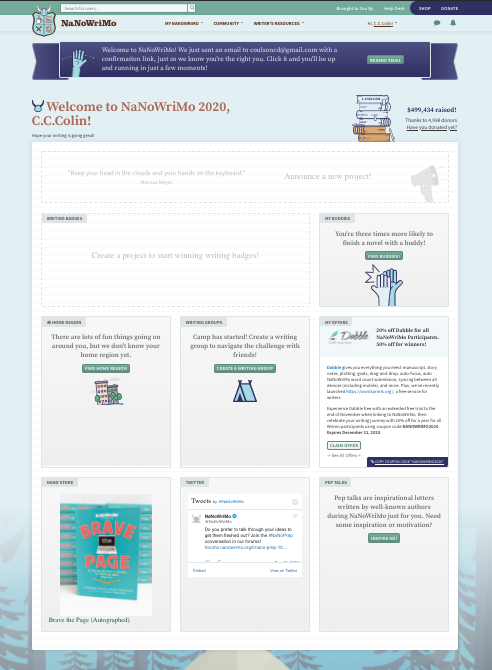
This website seems very popular and offers a very simplistic organization of personal projects, forums and learning modules for the significant events. The discussions on the forums are more open-ended for users to present their projects rather than challenging the users with a form of a call to action to have the user participate in an enclosed project. I believe a more directed user flow would work better with my concept than this form of writing challenge.
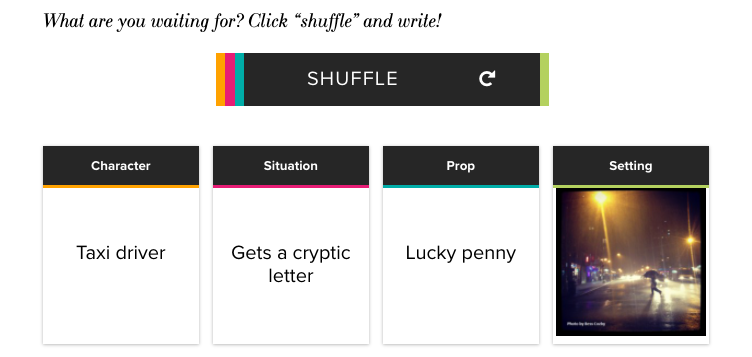
I like the idea of creating an experience like this for the users where it is a challenge. Still, I would add groups and a mix of prompts such as this and other more specific challenges for the user to choose their preference and reward them with group feedback and showcases of work.
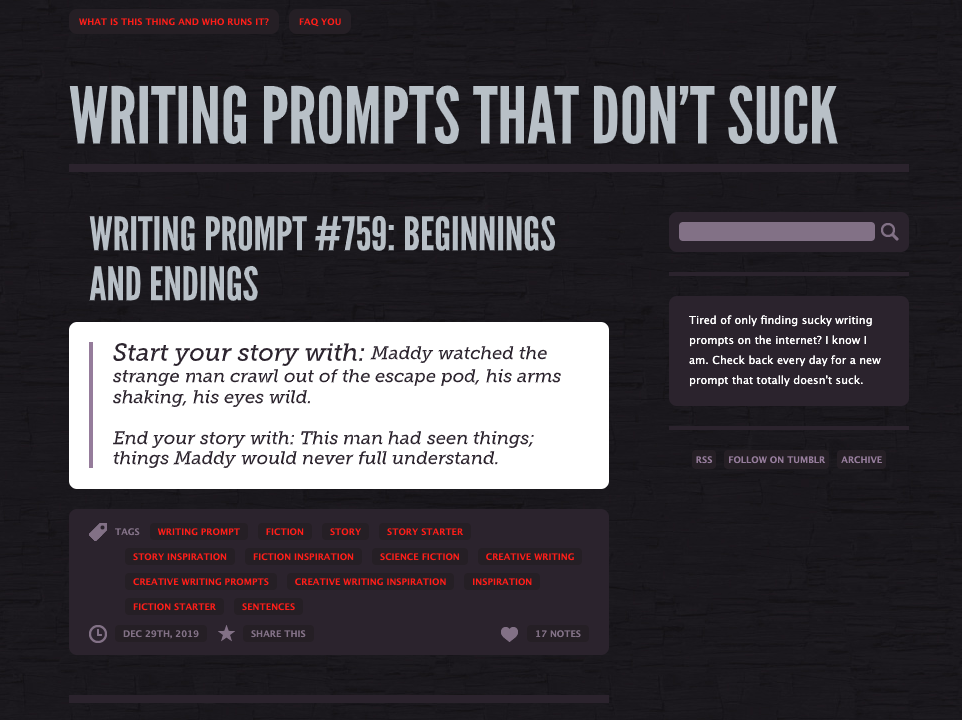
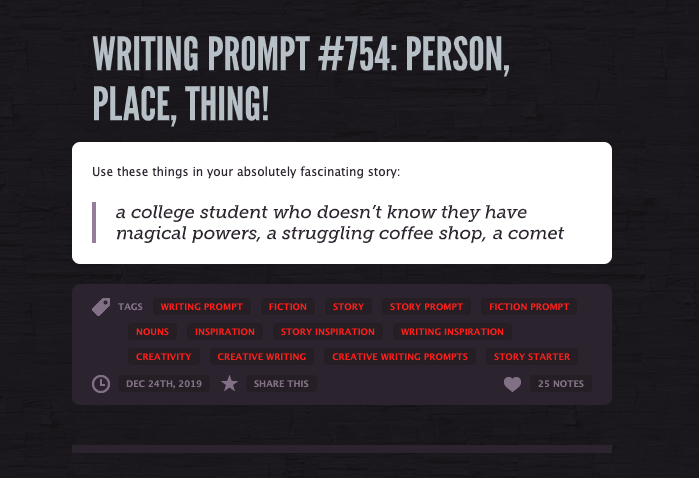
This is an example of a less interactive user experience that prompts the user with a mixture of different types of challenges but would benefit from more user interactions, in my opinion.
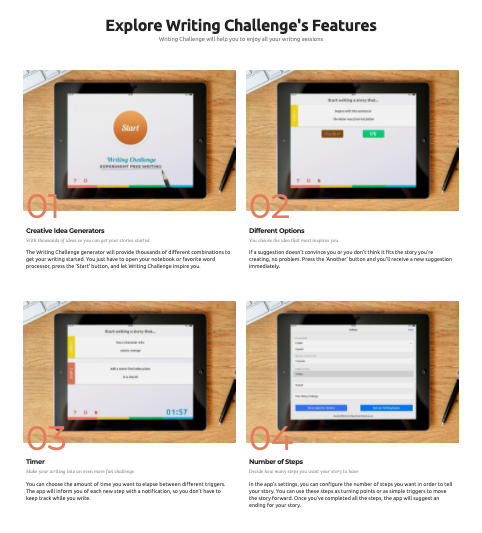
Writing Challenge is a game-based app that's meant to spark creative ideas for writers of all sorts. After pressing start, the app gives you your very first prompt. Next, it will feed you additional prompts at timed intervals. Use these prompts to generate new ideas, build characters and dialogue, and create settings for your story scenes.
User flow

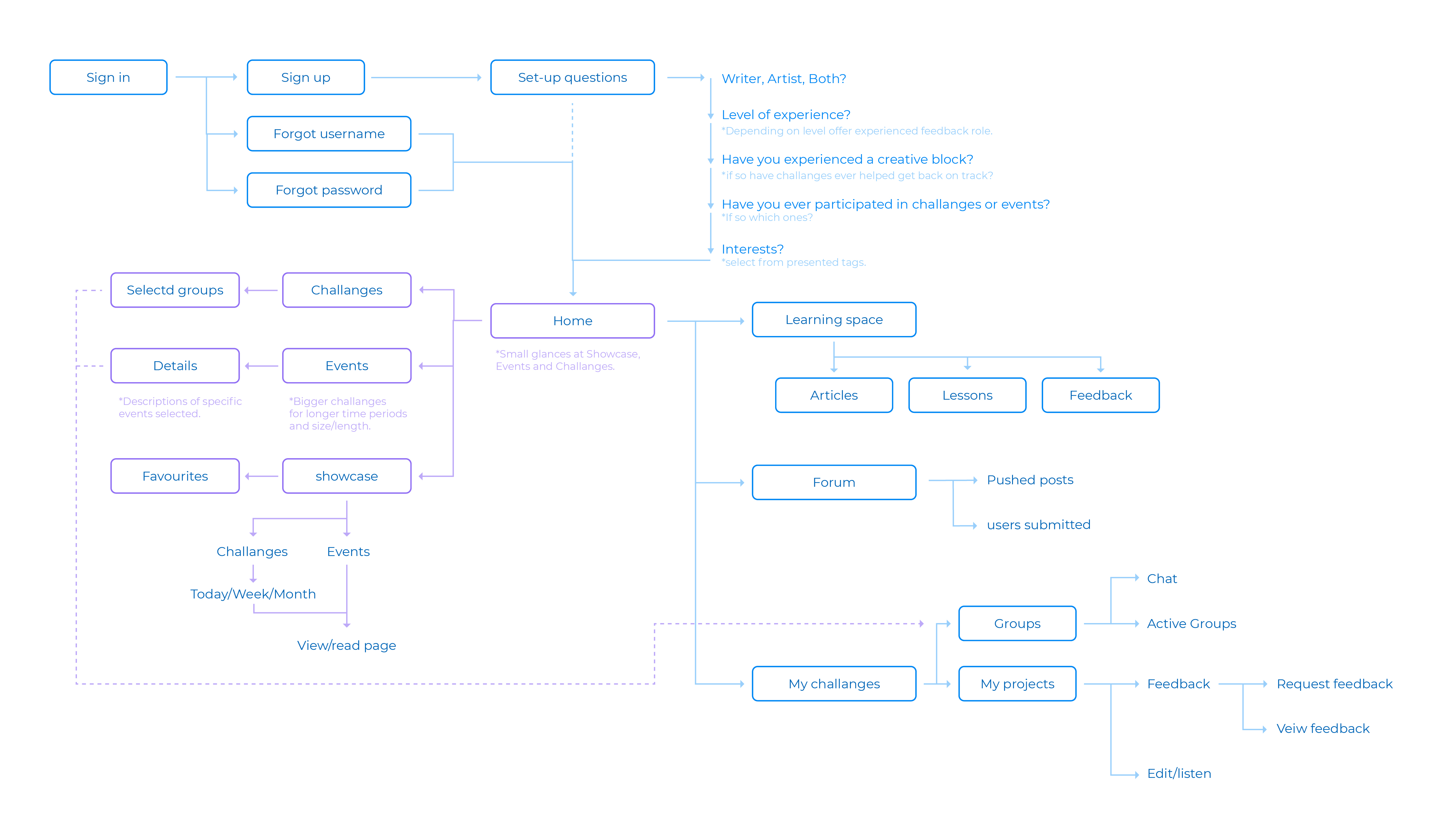
Low Fidelity wireframes
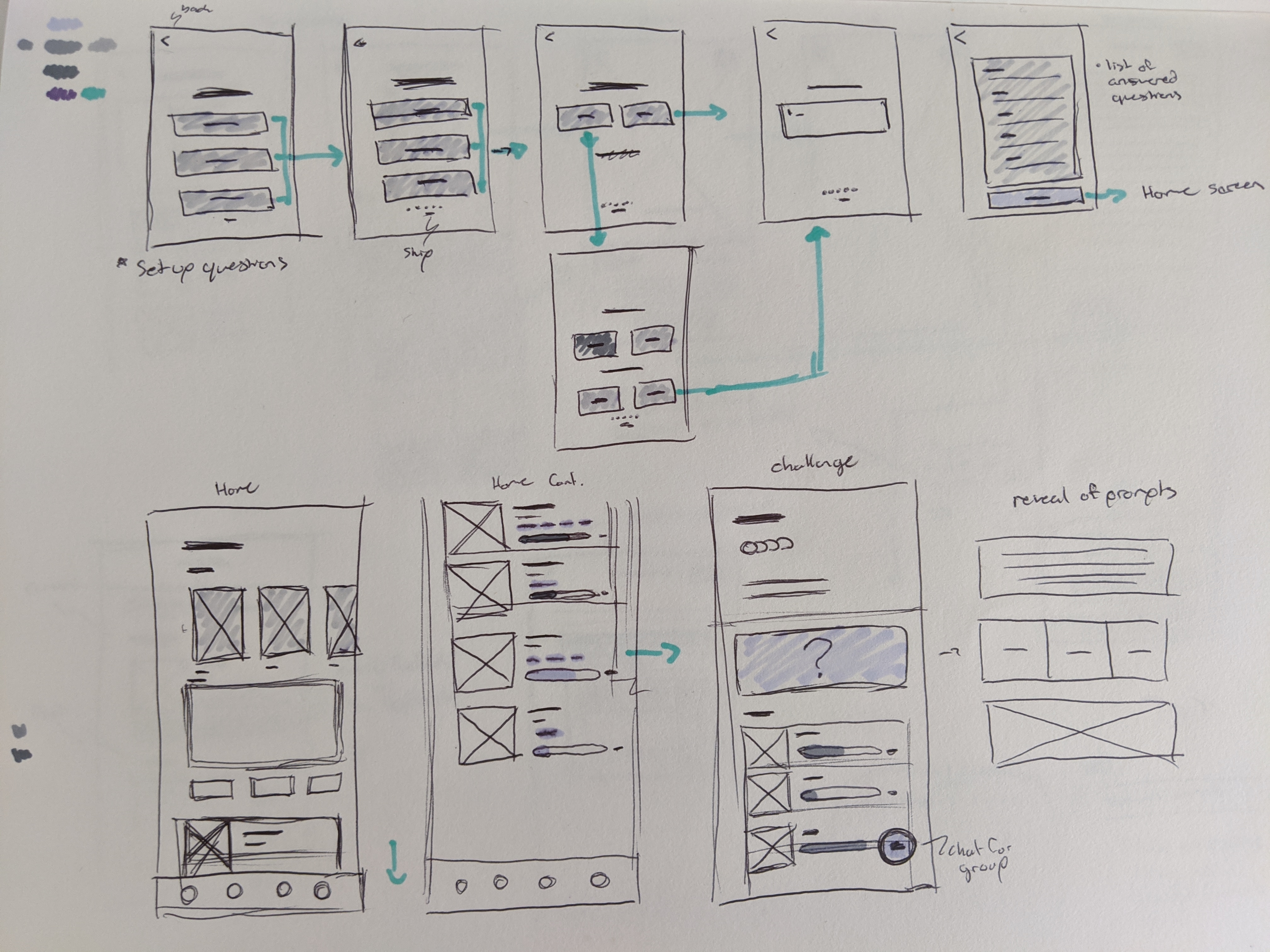
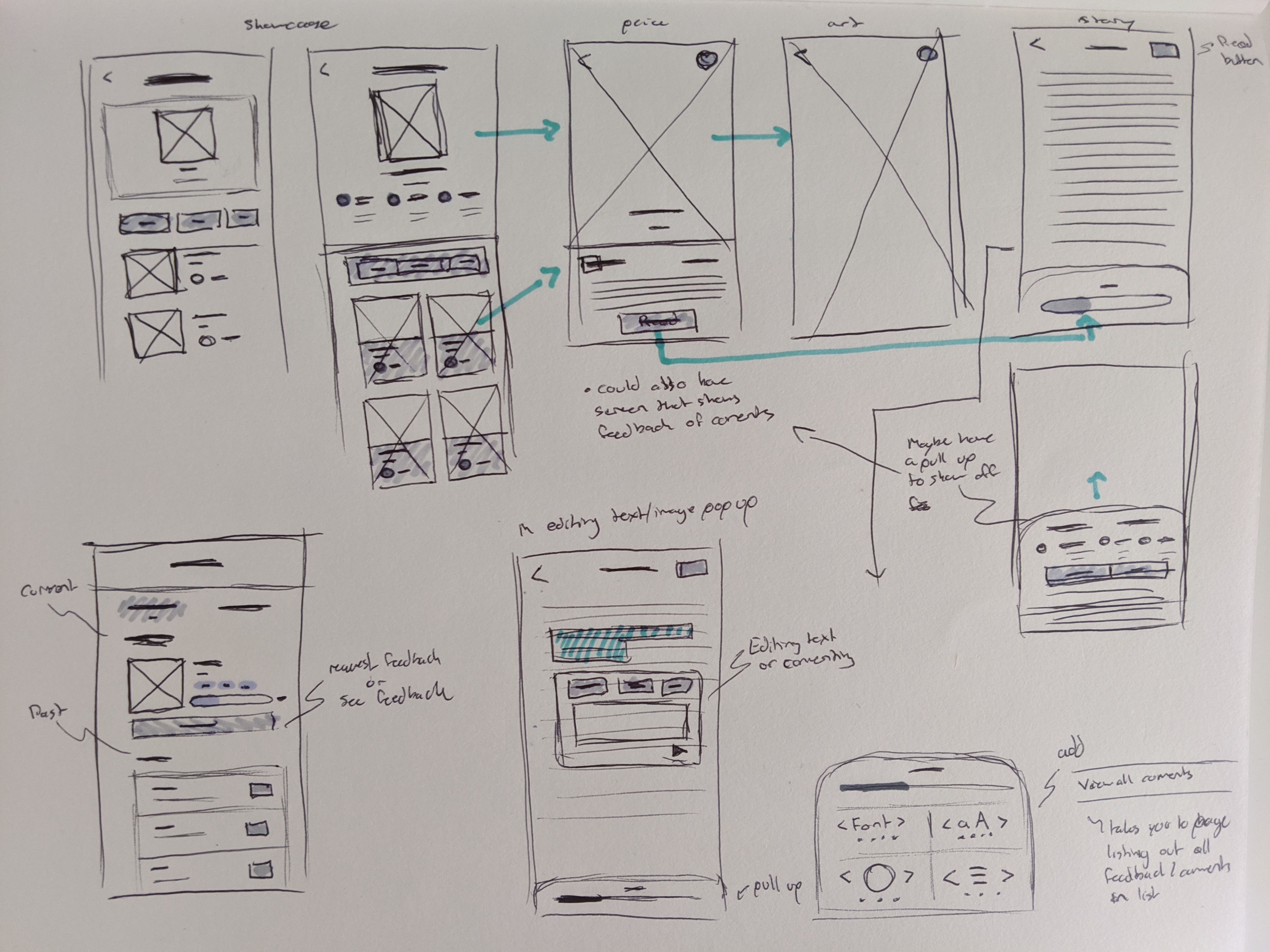
Class exercise one feedback screenshots
Paniz Adiban
Figma Link
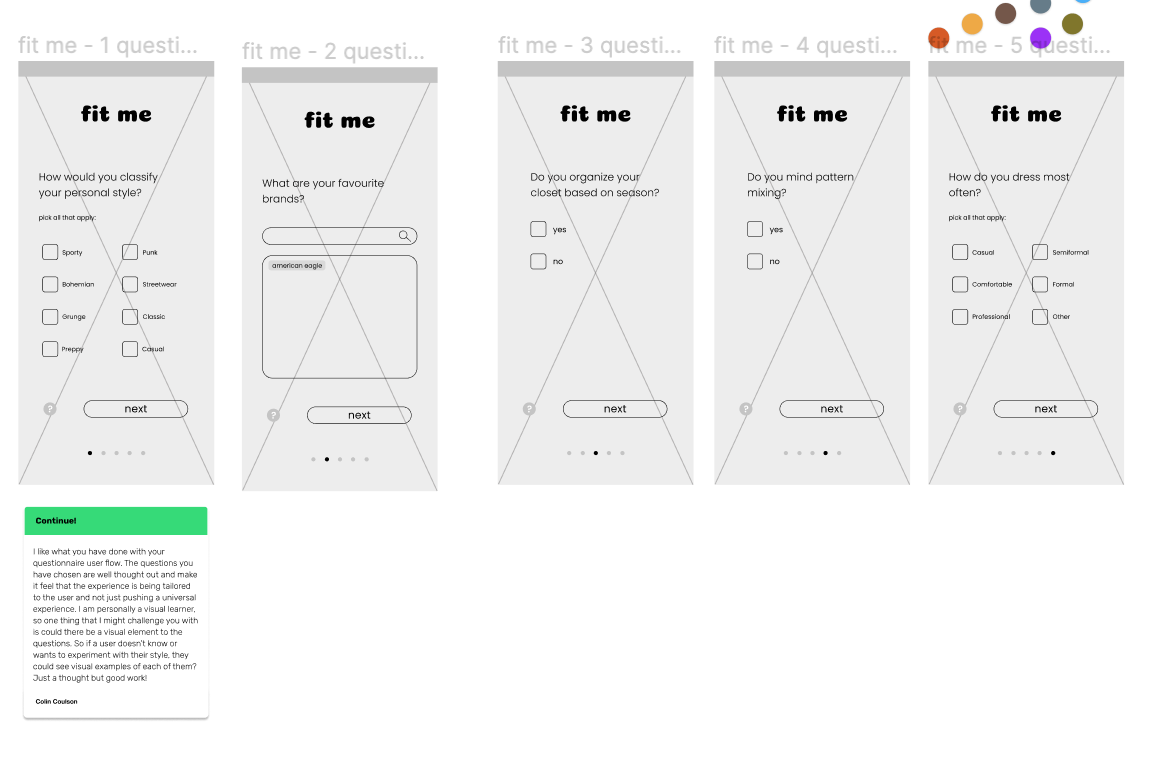
Georgia Bellingham
Figma Link
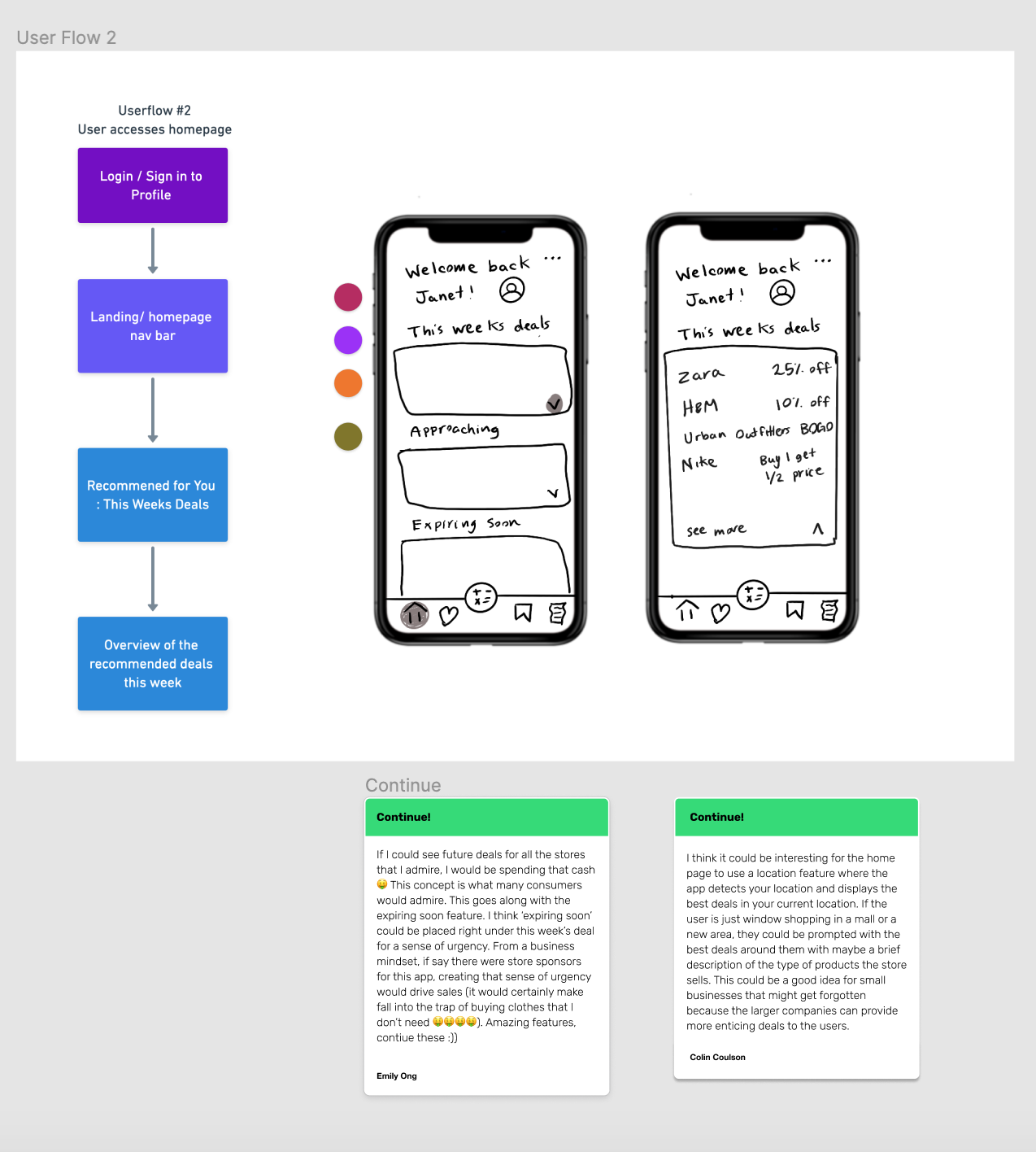
Janet Sohn
Figma Link
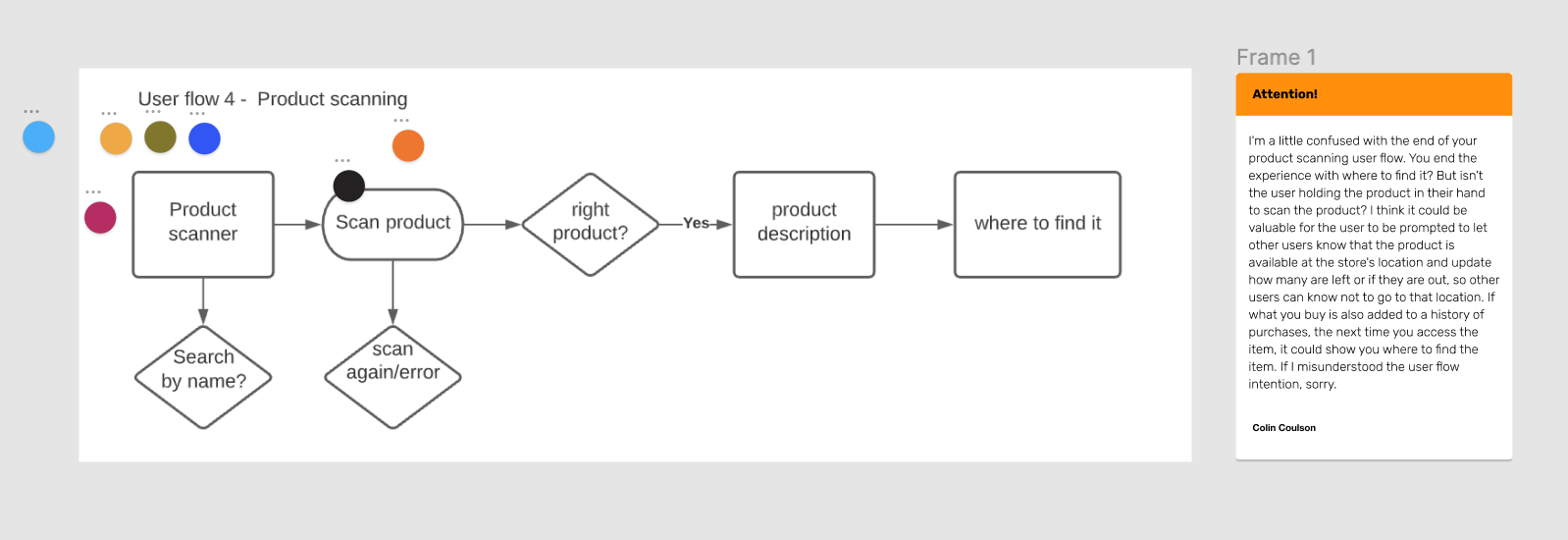
Kiran Patel
Figma Link
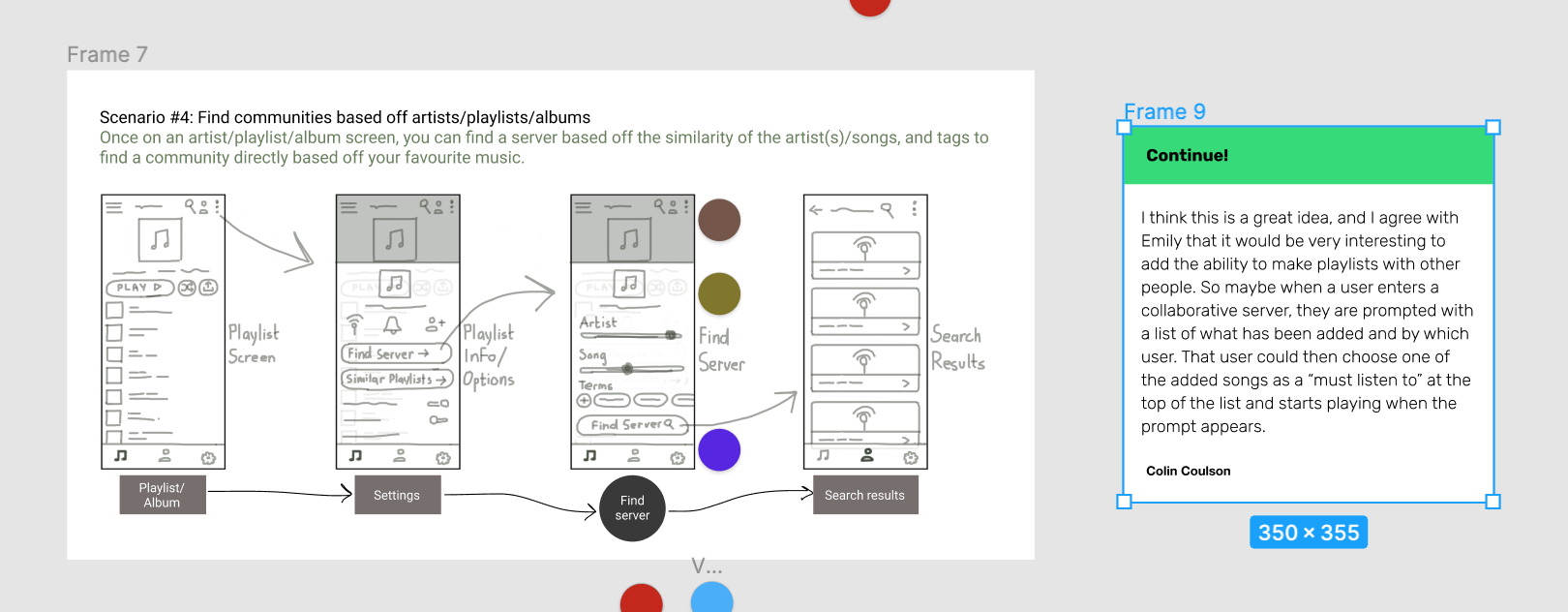
Paco Lui
Figma Link
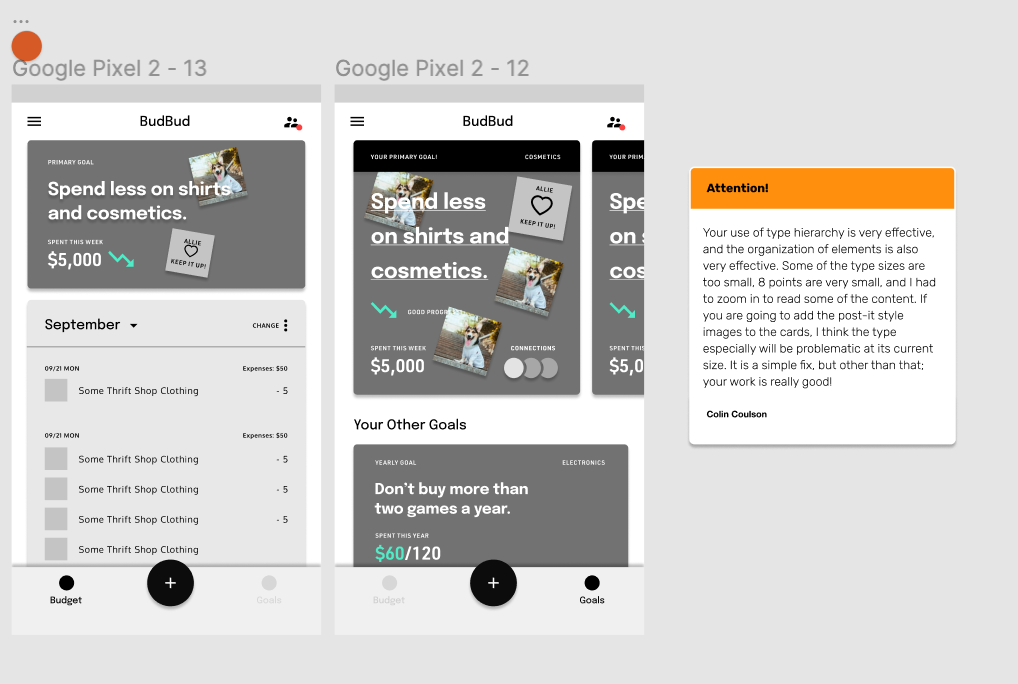
Emily Ong
Figma Link
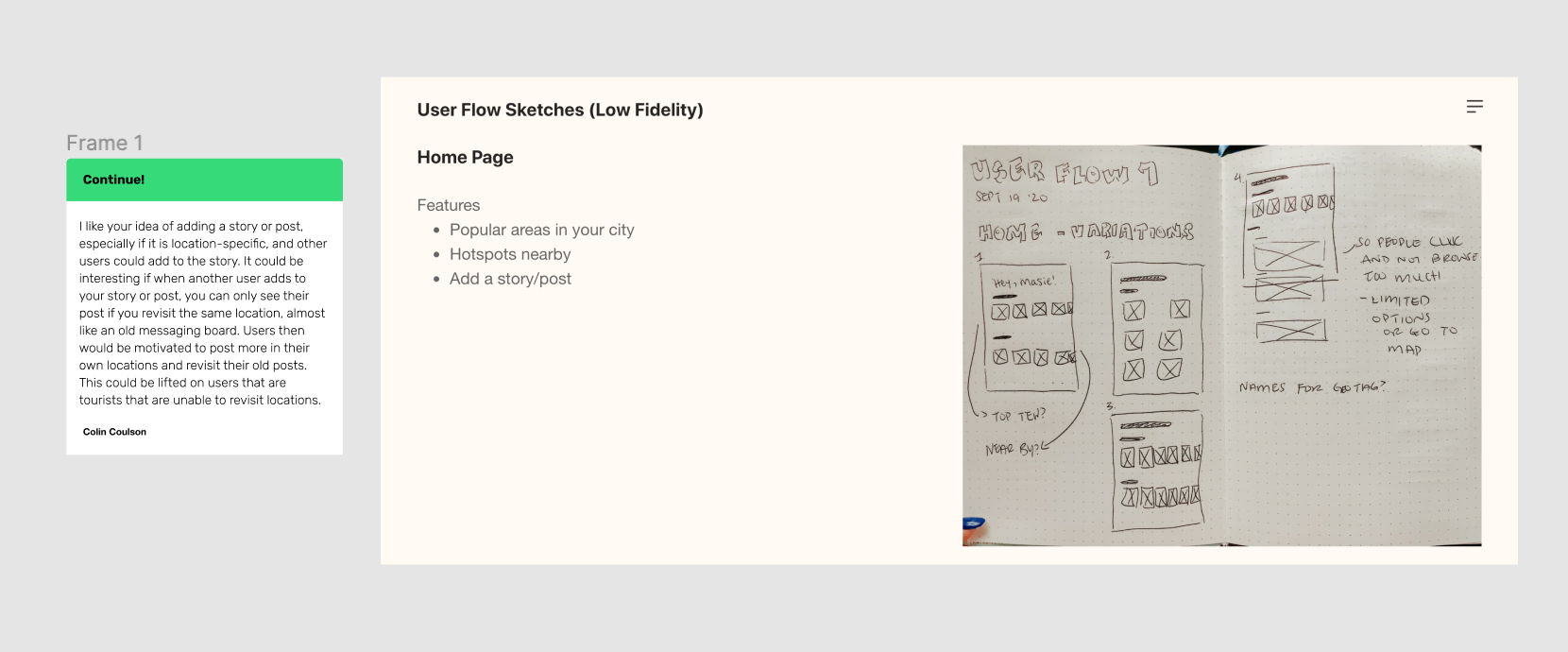
Robyn Chmelyk
Figma Link
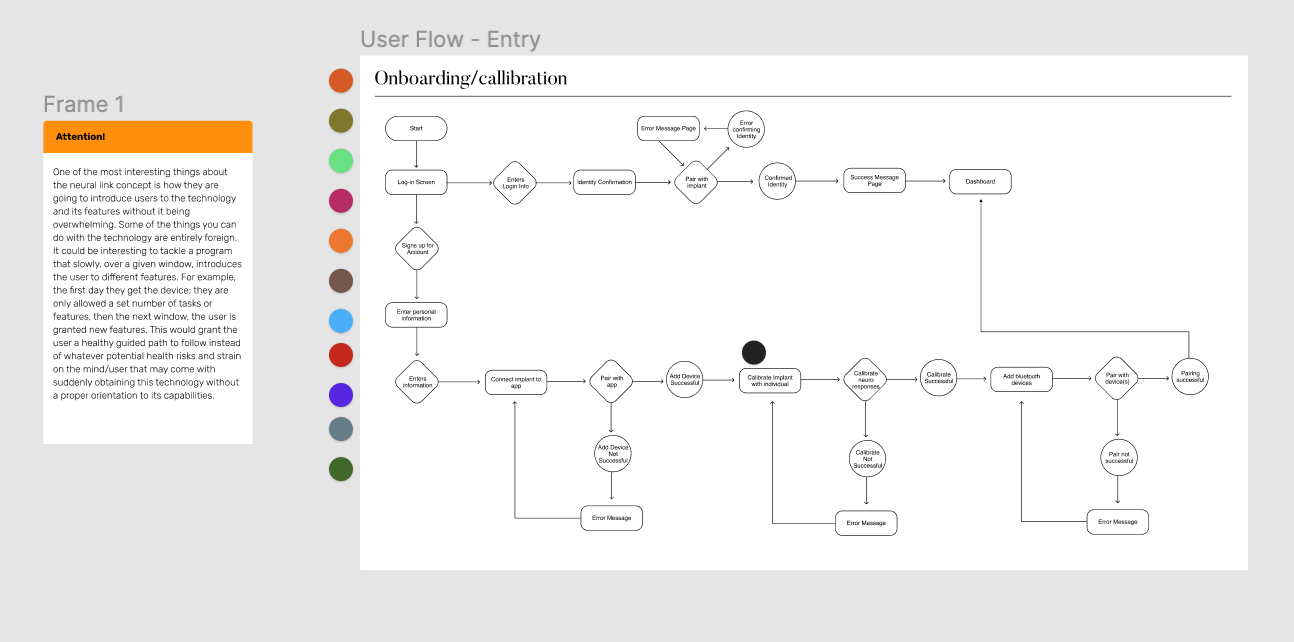
Luisa Jahn
Figma Link
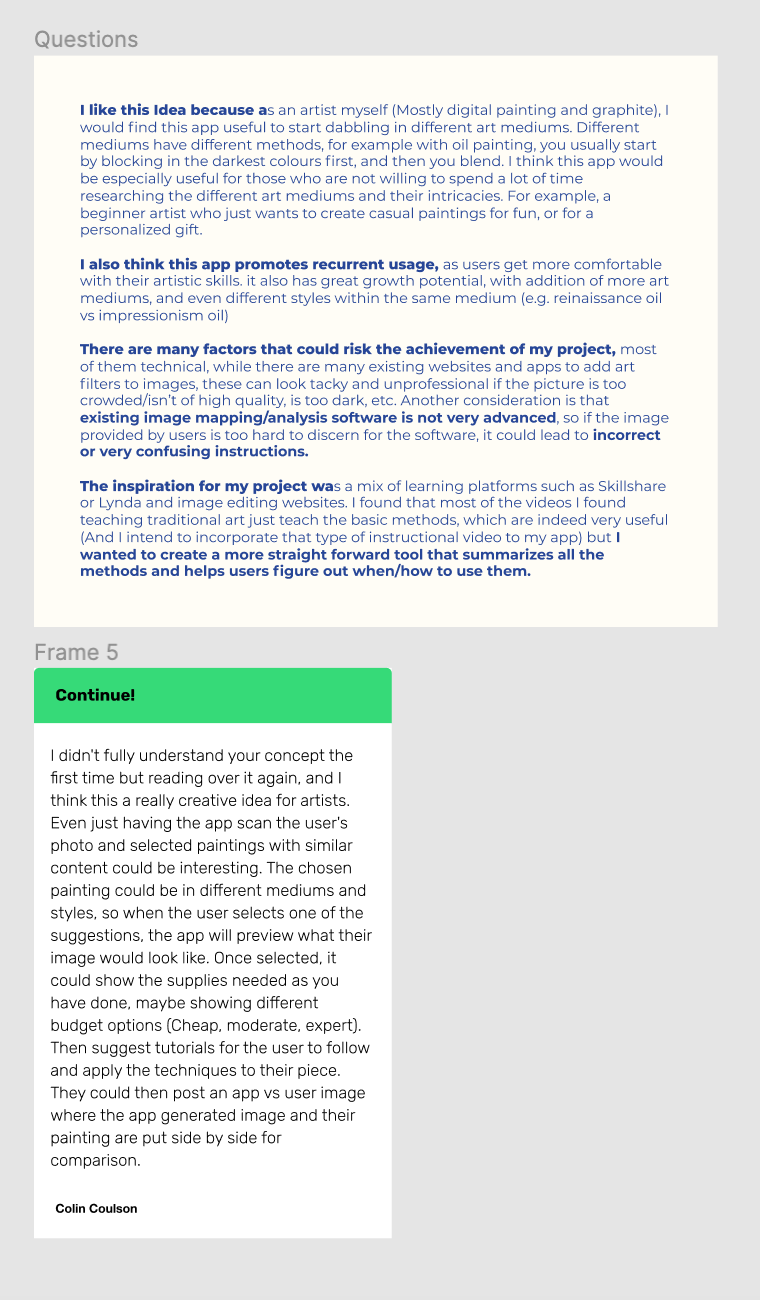
Mid-fidelity wireframes
Figma Link
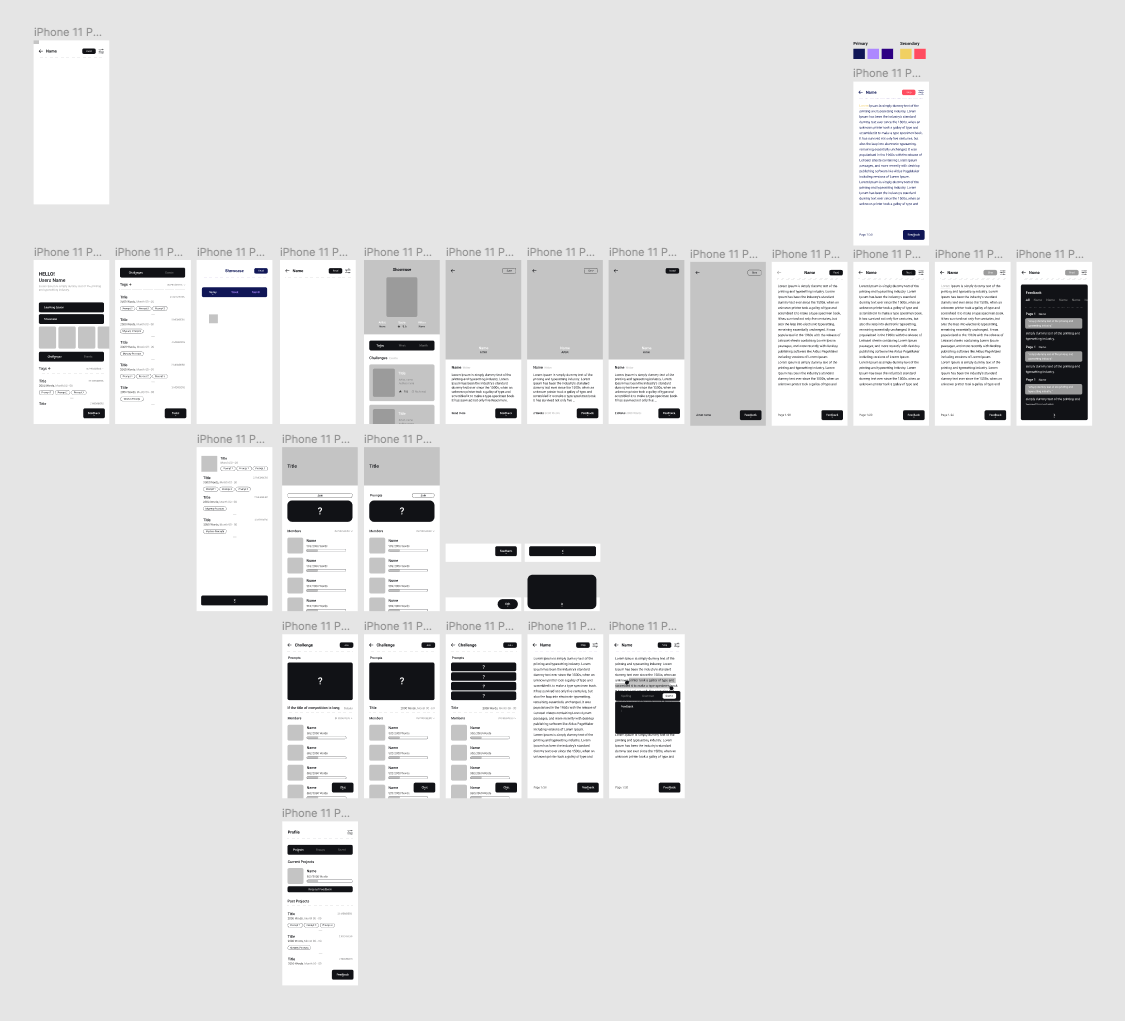
Style Guide
Figma Link
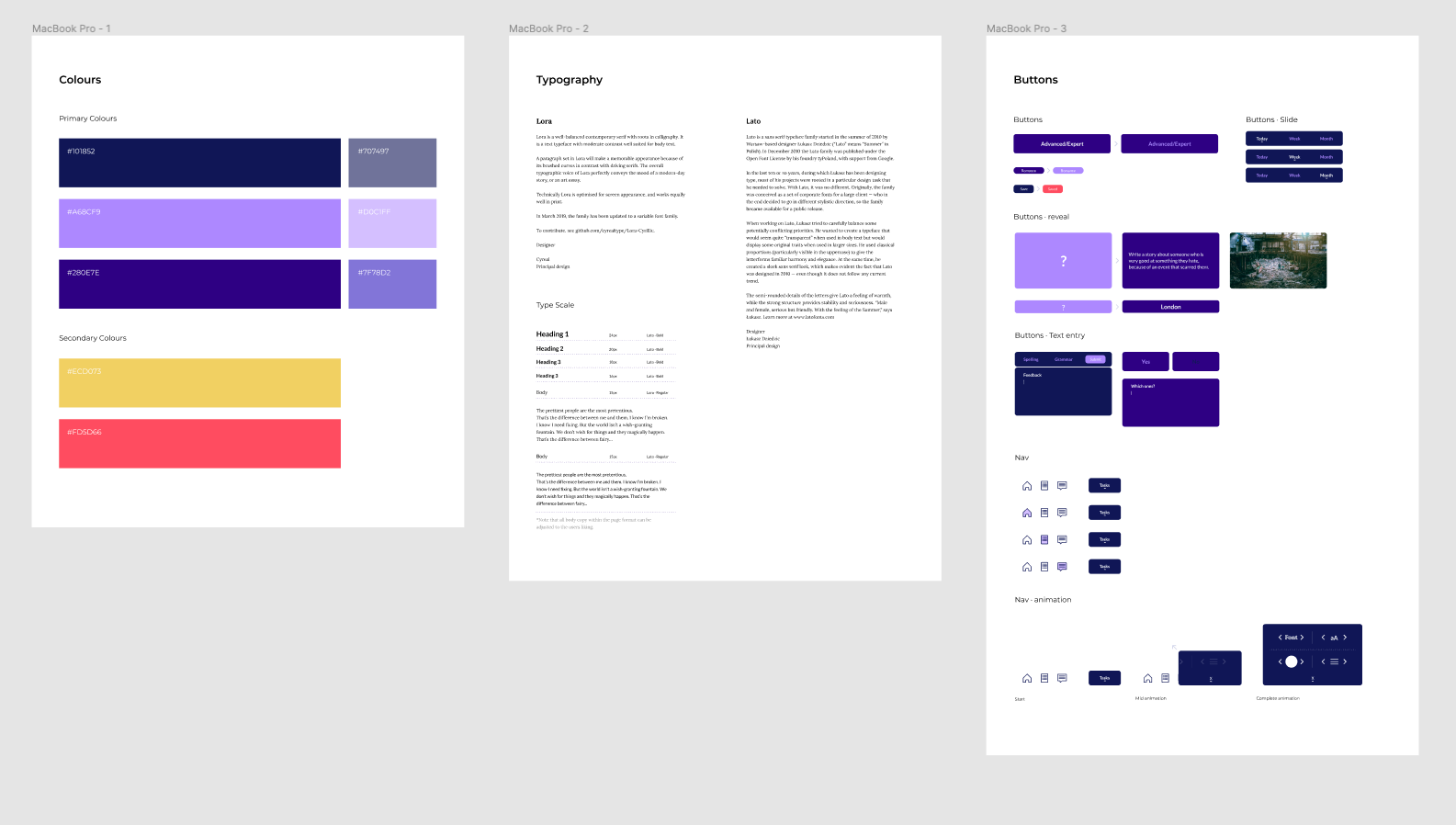
High-fidelity prototypes
Figma Link
